Unblocking a sink without a plunger is possible using several effective methods. Here’s a quick overview:
- Bicarbonate of soda (or baking powder) and white vinegar
- Use biological washing powder
- Use a natural drain cleaner
- Use Alka Seltzers and white vinegar
- Use a wire or tool to pull or poke out the blockage
- Use a blast of water
- Bleach and hot water
- Use a chemical sink unblocker
If these don’t work, consider removing the u-bend for a thorough clean.
In this guide, we’ll walk you through each of these ways of unblocking a sink without a plunger. We’ll look at the easiest ways, the most environmentally-friendly ways, and the ones that work for really stubborn blockages. If none of them work for you, we’ll also look at how to remove the u-bend under the sink to clear stubborn pipe blockages.
Don’t fancy trying to deal with a blocked sink yourself? Don’t panic – a local handyman will have it cleared in no time!
Method 1. How to unblock a sink with baking soda and vinegar (Easy)
Unblocking a sink without a plunger can be straightforward using bicarbonate of soda (or baking soda crystals) and white vinegar. They might sound like standard household items – but when mixed together they make an especially fizzy chemical reaction – which is often enough to shift a blockage.
Follow these steps:
- Clear the Sink: Remove any standing water from the sink using a cup or container.
- Add Bicarbonate of Soda: Pour half a cup of bicarbonate of soda down the plug hole.
- Add White Vinegar: Follow this with half a cup of white vinegar. You’ll hear fizzing as the two react.
- Wait: Allow the mixture to sit for about 15 minutes.
- Rinse with Hot Water: Flick the kettle on and pour the boiling water down the drain to flush out the blockage.
This method is simple and uses household items to help you unblock a sink effectively.
Method 2. How to unblock a sink with your bare hands (Easy)
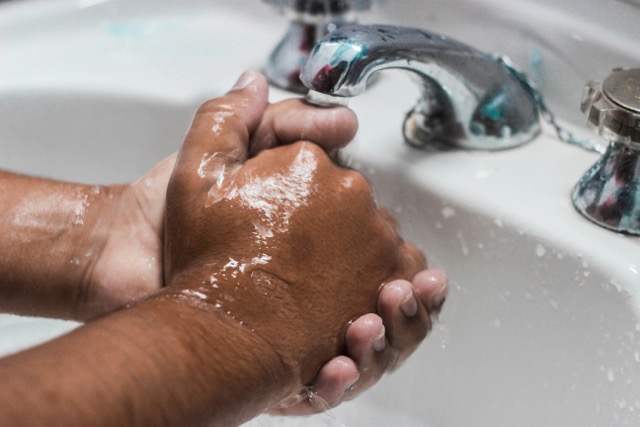
Unblocking a sink with your bare hands is a straightforward method for minor blockages, especially if you can reach the obstruction directly.
Here’s a step-by-step guide to help you through:
- Remove Standing Water: Use a cup or container to bail out any standing water in the sink.
- Check the Drain: Look into the drain for any visible debris or blockage that you can reach with your hands.
- Remove the Blockage: Carefully reach into the drain and pull out any hair, food particles, or other obstructions.
- Cup your hands over the plug hole: Cup your hand as effectively as you can and try to create a seal between your hand and the sink around the plug hole. Now gently push down, maintaining the seal, to force air and water through the blockage.
- Clean up: Wash your hands thoroughly and clean the area around the drain to ensure no residue is left.
- Test the Drain: Run water through the sink to check if the blockage has been cleared.
This method works best for surface blockages and is effective for quick, easy fixes.
Method 3. Use a natural drain cleaner (Easy)
A natural drain cleaner can be an environmentally friendly way to unblock your sink – and it’s a good choice if you’d rather not flush harsh chemicals into the sewage system.
Here’s how to do it:
- Choose a Natural Drain Cleaner: Take a look at the available drain cleaners at the supermarket. Some can be very harsh – so if you want one that’s as natural as possible, look for natural ingedients or those that market themselves as being safe for the environment.
- Read the Instructions: Make sure you follow the instructions very carefully – even natural products should be used in the safest recommended way.
- Pour the Cleaner: Pour the recommended amount of cleaner down the drain.
- Wait: Allow it to sit for the time specified on the product label. Sometimes, it will tell you to leave it longer if it’s an especially stubborn.
- Flush with Hot Water: Boil a kettle and pour the hot water down the drain to flush out the loosened blockage.
This method helps to clear the drain while being kind to the environment.
Method 4. Use Alka Seltzers and white vinegar (Easy)
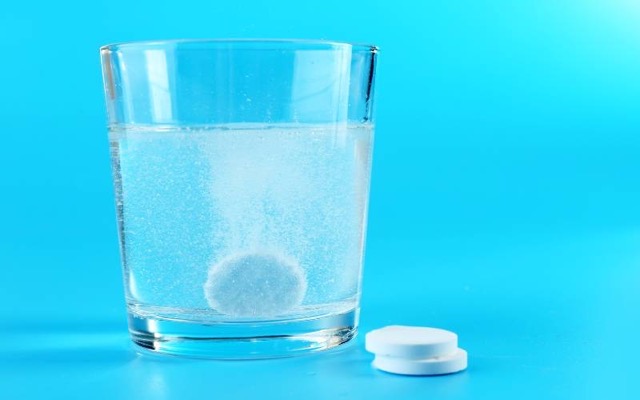
Using Alka Seltzers and white vinegar can be an easy way to unblock your sink. Like mixing bicarb with vinegar, this method uses the fizzy oxygen released from the chemical reaction to dislodge minor blockages.
Follow these simple steps:
- Clear the Sink: Remove any standing water from the sink using a cup or container.
- Insert Alka Seltzers: Drop four Alka Seltzer tablets down the drain.
- Add White Vinegar: Pour one cup of white vinegar into the drain.
- Wait: Allow the mixture to fizz and work on the blockage for about 10 minutes.
- Flush with Hot Water: Boil a kettle and pour the hot water down the drain to flush out the blockage.
This method uses the fizzing action of Alka Seltzer and vinegar to dislodge minor blockages effectively.
Method 5. Use a wire or tool to pull or poke out the blockage (Medium)
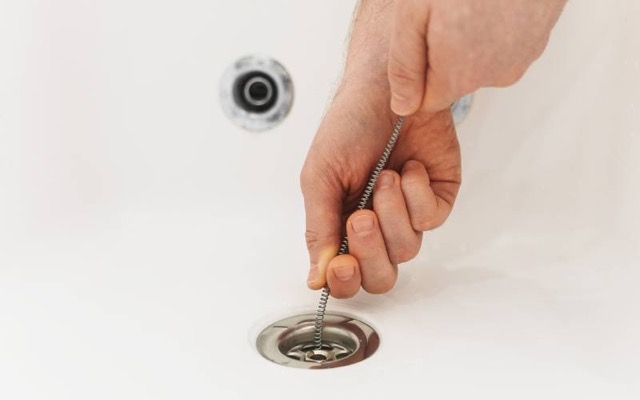
Using a wire or a tool to manually remove a blockage can be very effective. There’s a specific tool made for this job known as a ‘drain snake’ – but if you can’t get your hands on one quickly, a similar piece of flexible wire (such as net curtain wire) will work wonders too.
You might be able to get a straightened wire coat hanger to work – although they’re a bit stiffer than drain snakes – but it’ll work if it’s fairly bendy.
Here’s how to do it:
- Straighten a Wire Coat Hanger: If you don’t have a plumber’s snake, a wire coat hanger works well. Straighten it out, leaving a small hook at one end.
- Insert into the Drain: Carefully push the wire or tool into the drain, gently twisting to catch any debris.
- Pull Out the Blockage: Once you feel resistance, pull the wire out slowly, bringing the blockage with it.
- Flush with Hot Water: Boil a kettle and pour the hot water down the drain to clear any remaining debris.
This method allows you to physically remove the blockage, ensuring the drain is clear.
Method 6. Use a blast of water (Easy)

A powerful blast of water can help dislodge stubborn sink blockages. Be warned though, this can be a messy method, so make sure you’re well covered and have plenty of towels around the sink.
As an important note, you shouldn’t use this method if you’ve previously used a chemical of any kind unsuccessfully. Blasting water down the sink could send the harsh chemicals back up the pipe – and they’re not the kind of stuff you want to be splashed with.
Assuming everything is safe, follow these steps:
- Remove Standing Water: Clear any water from the sink using a cup or container.
- Prepare a Hose or Bottle: If you have a hose that fits over the tap, attach it securely. Alternatively, use a large plastic bottle with a small nozzle.
- Seal the Drain: Place the hose or bottle nozzle over the drain, ensuring a tight seal.
- Blast with Water: Turn on the tap or squeeze the bottle to forcefully push water down the drain.
- Check the Drain: Run hot water to see if the blockage has cleared.
This method uses water pressure to effectively push through and dislodge blockages.
Method 7. Bleach and hot water (Easy)
Using bleach and hot water can be an effective method to unblock your sink with no plunger. It’s a little harsher than the natural methods we’ve talked about – so make sure you handle the bleach very carefully. A thicker bleach will usually sit in the pipe a little longer too – so worth going for that option.
Follow these steps:
- Clear the Sink: Remove any standing water from the sink using a cup or container.
- Add Bleach: Carefully pour a cup of bleach down the drain.
- Wait: Allow the bleach to sit for about 15 minutes to break down the blockage.
- Flush with Hot Water: Boil a kettle and carefully pour the hot water down the drain to flush away the debris.
This method utilises the strong cleaning properties of bleach combined with hot water to effectively clear blockages.
Method 8. Use a chemical sink unblocker (Easy)
We’ve listed this method last in the list, simply because the chemicals involved are usually corrosive – so you might not want to use them, either for your own safety reasons or because you’re aware they’re not very eco-friendly.
That said, they are sometimes required, so let’s take a look at how it’s done.
- Read the Instructions: Before starting, read the product instructions carefully.
- Protect Yourself: Wear rubber gloves and ensure the area is well-ventilated.
- Pour the Unblocker: Pour the recommended amount of chemical unblocker down the drain.
- Wait: Allow the unblocker to work for the time specified on the product label, usually around 15-30 minutes.
- Flush with Water: Rinse the drain thoroughly with hot water to clear away the dissolved blockage.
Chemical unblockers are strong and can clear tough blockages quickly, but they should be used cautiously and sparingly to avoid damaging pipes.
Method 9. Use biological washing powder (Easy)
Using biological washing powder is another effective method to unblock a sink – it’s also a simple and cheap trick – since you’ll probably have some washing powder in the house already. Make sure you’re using a biological powder though – it’s a bit tougher than non-bio versions.
Here’s a straightforward guide to help you through the process:
- Clear the Sink: Remove any standing water from the sink using a cup or container.
- Add Washing Powder: Pour about two tablespoons of washing powder down the drain.
- Add Hot Water: Boil a kettle and carefully pour the warm water down the drain.
- Wait: Allow the solution to sit for at least 30 minutes.
- Flush with Hot Water: Boil another kettle and flush the drain again with hot water to clear the blockage.
This method leverages the enzymes in biological washing powder to break down organic matter causing the blockage.
Method 10. Unblocking the u-bend (Harder)
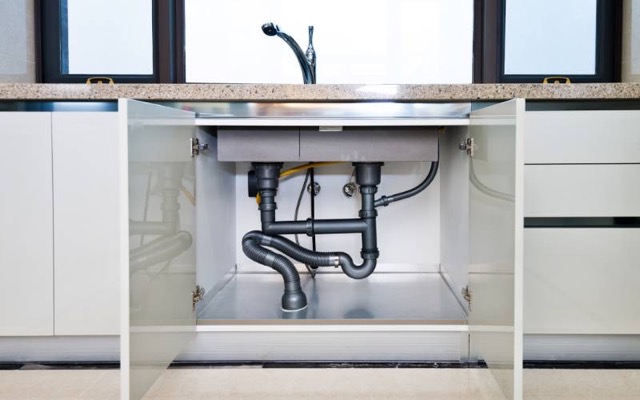
If you still have slow draining water – or your cleaning products have just failed to go down your kitchen or bathroom sink – you might be facing something especially tough stuck in your u-bend.
The u-bend is the pipework directly underneath the sink – sometimes called the ‘trap’. The U design creates a section of water between your sink and the sink drain – helping to stop nasty smells coming back into your house. The trouble is, it’s quite a tight bend – so it’s a prime location for build ups of hair, food, and other stuff that might go down your bathroom or kitchen sink.
Unblocking the u-bend is a bit more of an involved job – so this is often the point at which people decide to get a handyman involved. That said, if you’ve got the time, the tools, and a couple of towels to hand, it’s not especially difficult to do yourself.
Follow these detailed steps to get the job done:
- Gather Your Tools: You’ll need a bucket, a pipe wrench or mole grip, and a pair of rubber gloves.
- Place the Bucket: Position the bucket under the u-bend to catch any water or debris.
- Loosen the Slip Nuts: Use the wrench or grips to loosen the slip nuts on either side of the u-bend. These are the large plastic nuts holding the u-bend in place.
- Remove the U-bend: Carefully remove the u-bend and empty its contents into the bucket. Be prepared for a bit of a mess.
- Clean the U-bend: Rinse the u-bend with water to remove any remaining debris. You can use an old toothbrush to scrub away any stubborn grime.
- Check for Blockages: Before reassembling, check both ends of the pipes connected to the u-bend for any remaining blockages and remove them.
- Reassemble the U-bend: Once clean, reattach the u-bend by screwing the slip nuts back on. Make sure they are tight enough to prevent leaks but not overly tightened.
- Test the Drain: Run water through the sink to ensure the blockage is cleared and check for any leaks around the u-bend.
This method ensures that any physical blockages in the u-bend are removed, providing a clear and free-flowing drain. Remember to wear gloves and be cautious when handling the u-bend to avoid any unnecessary spills.
Sink still blocked?
If you’ve tried a few different methods and your sink is still blocked, it might be time to speak to a handyman or local plumber.
There are a few reasons your sink might still be blocked after using one or more of the above methods – but perhaps the most awkward to deal with is a blockage that’s further down the pipes, potentially in the waste pipes underground. If this is the case, a professional will almost certainly be needed – they’ll typically come with drain rods that are very long and able to get deep into the pipework.
If you decide to go down this route, check if you have coverage for drain blockages. Some energy companies offer this as part of boiler and drain coverage you have – so it’s worth a look before you spend any money unnecessarily.
That said, drain cleaners aren’t usually super expensive – so if you’re not covered, you don’t have to worry about a blocked sink breaking the bank. Of course, if you’re in rented accommodation, this is likely to be something your landlord will pick up – so again, worth making a phonecall.
Summary: How to unblock a sink without a plunger
Unblocking a sink without a plunger is achievable using various household items and methods.
Common solutions include using bicarbonate of soda and white vinegar, biological washing powder, natural drain cleaners, or Alka Seltzers with vinegar.
Physical methods involve using a wire or a blast of water. For tougher blockages, bleach or chemical sink unblockers may be necessary.
If these methods fail, manually removing and cleaning the u-bend can resolve persistent issues. Seeking professional help is advisable for deeper, more complex blockages.
Key Takeaways
- Household Items: Bicarbonate of soda, white vinegar, and biological washing powder can effectively clear minor blockages.
- Natural Solutions: Use natural drain cleaners for an environmentally friendly approach.
- Physical Methods: Employ a wire, tool, or blast of water to physically remove or dislodge blockages.
- Manual Cleaning: Removing and cleaning the u-bend can resolve stubborn blockages that other methods can’t.
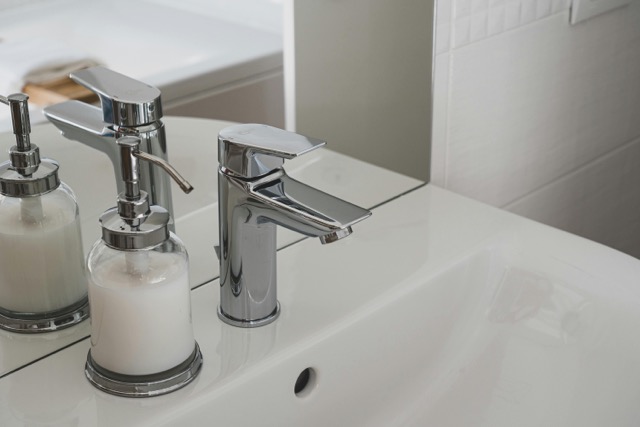

13 comments
PhilosophyFan101
While I appreciate the intent behind recommending natural cleaners like vinegar and baking soda, I can’t help but question if some of these methods truly compare in efficacy to their chemical counterparts. For instance, when dealing with a severe blockage, would such mild solutions provide the necessary potency to resolve the issue, or is there a point where we must acknowledge the limitations of natural remedies?
EcoWarrior22
That’s a fair point, but in my experience, combining these methods usually gets the job done without harsh chemicals. Plus, it’s all about the long-term impact as well.
NoPlumbBob
used bleach and hot water yesterday on my kitchen sink, it kinda worked but smell was bad. anyone got tips for dealing with the smell?
JazzyJeff
Who knew Alka Seltzer wasn’t just for hangovers? Now it’s for sinks too. What’s next?
HandyMandy
Brilliant rundown of methods, Guild Admin. Particularly intrigued by the u-bend approach — it’s daunting but definitely feels like something I could tackle with the right tools. It’s empowering to know there are so many solutions that don’t immediately involve calling in a professional. Will be bookmarking this for future reference!
TheGreenThumb
Does anyone have experience with using the biological washing powder method for particularly tough blockages? My kitchen sink seems to be a magnet for these issues, and I’m keen to try something new but hesitant about potential plumbing damage.
HandyHarriet
I’ve used it before and had good results! Just make sure you flush it well with hot water afterwards to avoid any issues.
Lucy in the Sky
Anyone know if the Alka Seltzers and white vinegar method is safe for all types of pipes? Don’t want to end up causing more damage than the blockage did.
Mike87
never thought about using alka seltzers for the sink, gonna give it a shot next time. cheers for the tip.
Trev90
Not sure about the effectiveness of biological washing powder for sink blockages. Has anyone actually tried it and can share results? I’m struggling to see how it can be as effective as a dedicated sink unblocker.
EcoWarrior22
I’ve used biological washing powder before, and it works decently for minor blockages. Plus, it’s less harmful to the environment than some harsh chemicals!
SiobhanF
Absolutely thrilled to see natural solutions like baking soda and vinegar being recommended for unblocking sinks. As a professional cleaner, I’ve always advocated for the use of eco-friendly products. It’s not only better for the environment but often just as effective as chemical alternatives. Guild Admin, kudos to bringing attention to responsible choices!
Maisy Flower
Absolutely love the idea of using baking soda and vinegar to unblock a sink. It’s such an eco-friendly option compared to harsh chemicals. Tried it myself, and it works a treat! Props to Guild Admin for sharing this gem.
Comments are closed.